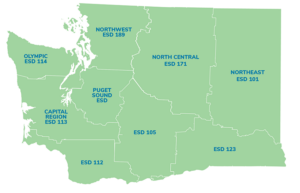STEP Teacher Professional Development: Learning Environment: One full day in lab, plus one full day receiving in-stream science training. Content to be delivered at these custom trainings shall be from among the lessons included in the STEP curriculum with the topic and method of instruction decided in advance according to participants needs. Learning Outcomes: (1) increased science content knowledge of watersheds, estuaries, benthic macroinvertebrates (BMI) and salmonids; (2) ability to deliver STEP science lessons in the field utilizing appropriate scientific tools and equipment; (3) ability to deliver STEP science lessons in the classroom utilizing appropriate scientific tools and equipment. CEUs arranged by MBSTP through San Jose State University. Course Content: STEP PD will cover: Form Follows Function, Internal/External Salmonid Anatomy, Salmonid and BMI Habitat, Salmonid and BMI Life Cycle. Streamside work will include identifying BMI using a dichotomous key, Bio Monitoring, Calculating Stream Volume and Flow, Conducting a Riparian Stream Study, and Water Chemistry. Content shall be aligned to the Next Generation Science Standards and appropriate for instructors teaching grade levels 3 5. Instructional Methods: Direct Teaching, Lecture with Discussion, Games. STEP Field Studies for students: 3 MBSTP personnel plan and coordinate day-long science field studies for 4 8th graders, including coordinating and paying for bus transportation if financial aid funds are available from its grants. If no grant funds are available, an estimate of the cost to plan and produce a field study are drawn up on a case-by-case basis and delivered to interested school personnel. A sample agenda for an estuary trip might include 15 minutes for unloading, bathroom break, water bottle fills. During an initiation circle, plans for the day, boundaries, logistics are delivered, along with clipboards and field journals. The mornings science includes a group lesson, presentation on Steelhead, and a salmon migration obstacle course. Students are split into 3 groups to participate in three 30-minute rotation stations, ensuring group size is small, with individualized guidance. Water Chemistry, Watershed Modeling, and Estuary Food Pyramids are popular choices. After a ½ hour lunch break another group science game such as Estuary Invaders is followed by an environmental conservation activity such as a microtrash cleanup or invasive plant removal. After counting and bagging trash, hands are sanitized and all circle up for discussion and closing remarks. Free Virtual Field Trips: MBSTP created a series of taped field trips which reside on the website that include related downloadable lessons aligned to NGSS or activities such as a home water use assessment and project. https://mbstp.org/step/step-to-the-sea-virtual-field-trips. Current topics: spawning & hatching, juvenile trout life & fish food, river life in the Summer, a visit to an estuary/river mouth, talking to a professional commercial salmon fisherman, salmon & human interaction, habitat conservation & resources. Additional videos are being developed.
|
|
|
|
|
|
|
|
|
|
|
|
|
|
|
|
|
|
 Please select the district(s) your located in. Used this map for reference.
Please select the district(s) your located in. Used this map for reference.